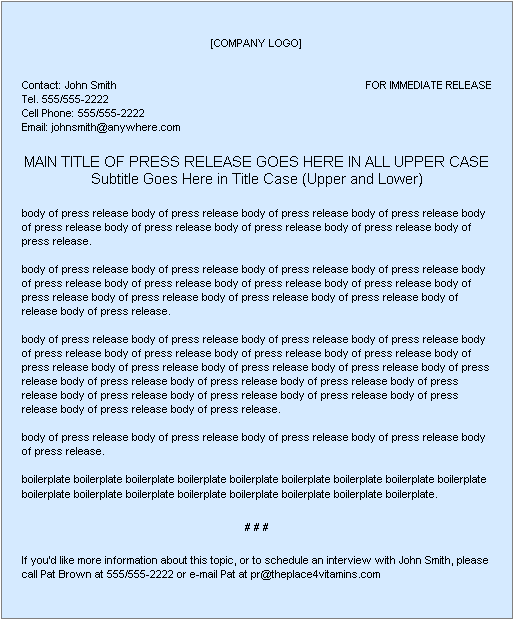Writing a press release that grabs the media’s attention and makes them write about your company is extremely hard. That being said, there is a lot you can do to increase your chances of success.
Make it Newsworthy
Ask yourself this question: if I were a journalist, would I write a story about this? If the answer is no, find an interesting angle for your story so people will want to write about it.
Start Strong
Your first paragraph has to be strong and clear, and it must summarize the entire press release. This is the only part of your press release that most journalists will read; if you fail to write a great first paragraph, your release is doomed to fail.
Format It Right
This is what press releases look like:

(Image from http://www.publicityinsider.com/release.asp)
Make It Fun to Read and Engaging
The most common mistake that most press releases make is to be boring. Make yours exciting, engaging, and fun to read.
Write a Great Headline
We talked about how important the first paragraph is. Well, the headline is still the most important aspect. Journalists get hundreds of stories every day. If your headline doesn’t grab their attention, they won’t read it.
Stick to the Facts
Something like “Cats and Dogs, the best pet store in the world…” won’t work. Try to make your press release as objective as possible. Don’t include your opinions in it; just facts.
Answer Who, What, When, Where, Why, and How
These are the six questions journalists will need answers for. Tell them what happened, who did it, when it happened, where it took place, why it happened, and how.
Include Your Contact Information
Most of you are probably thinking, “duh,” but you’ll be surprised by the fact that a big percentage of the press releases out there don’t include the contact information of their companies’ CEOs. By the way, this is whom journalists will want to talk to, so make sure he/she is available.
Add Resources
Have you found websites that journalists might find helpful to write the story? Include them in your press release.
Keep It Short
One page is the ideal length for most press releases.
Consider the Timing
Keep in mind the cut-offs for magazines, TV shows, and newspapers. You don’t want to be too late.
Check Your Spelling and Grammar
This is another “duh” piece of advice, but many press releases have misspellings and grammar mistakes.
Avoid Jargon
Don’t use fancy words. Make complex things simple. Instead of saying how your new computer has a “HYT567-HN microchip”, explain why the new chip is important and how it can help people be more productive.
Use an Active Voice
Say “John sold the truck” instead of “the truck has been sold by John”.
Get Permission
If you talk about or cite someone in your press releases, make sure you have their permission beforehand.
Use Mixed Case
DON’T WRITE A PRESS RELEASE IN ALL CAPS! DON’T OVERDO EXCLAMATION POINTS EITHER!!!
No HTML
Don’t include HTML code in your press releases, just text.


